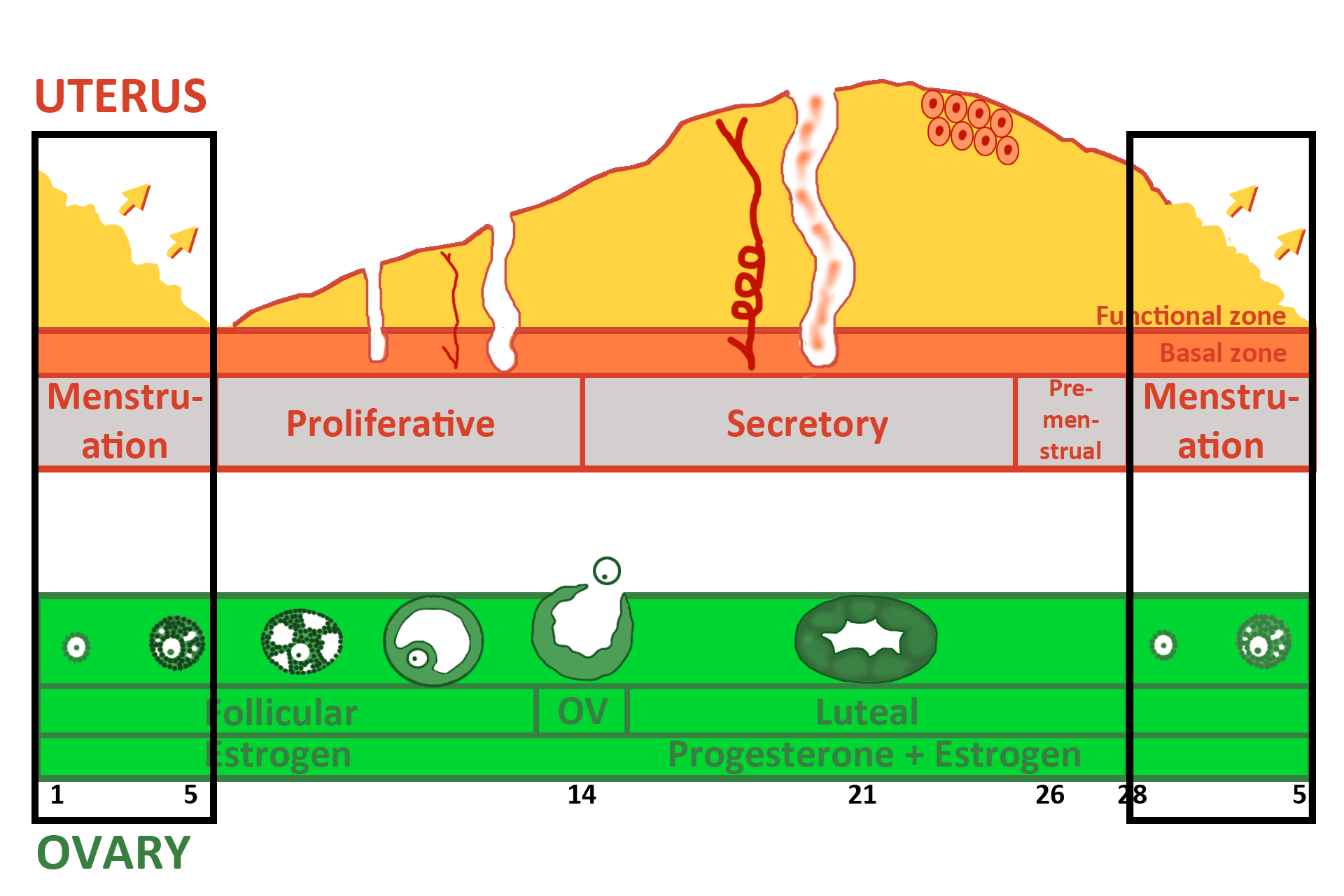
Uterus: menstrual phase (Days 1-5)
The ischemia produced by the contraction of spiral arteries leads to degeneration and sloughing of the functional zone, leaving only the basal zone remaining at the end of menstruation. The menstrual flow contains blood, tissue fragments, and uterine fluids. 100x

Sloughed tissue + blood
The ischemia produced by the contraction of spiral arteries leads to degeneration and sloughing of the functional zone, leaving only the basal zone remaining at the end of menstruation. The menstrual flow contains blood, tissue fragments, and uterine fluids. 100x

Functional zone
The ischemia produced by the contraction of spiral arteries leads to degeneration and sloughing of the functional zone, leaving only the basal zone remaining at the end of menstruation. The menstrual flow contains blood, tissue fragments, and uterine fluids. 100x

Basal zone
The ischemia produced by the contraction of spiral arteries leads to degeneration and sloughing of the functional zone, leaving only the basal zone remaining at the end of menstruation. The menstrual flow contains blood, tissue fragments, and uterine fluids. 100x

Myometrium
The ischemia produced by the contraction of spiral arteries leads to degeneration and sloughing of the functional zone, leaving only the basal zone remaining at the end of menstruation. The menstrual flow contains blood, tissue fragments, and uterine fluids. 100x

Graphic: menstrual phase >
Note that the menstrual phase of the uterine cycle overlaps the beginning of the follicular phase of the ovarian cycle.
 PREVIOUS
PREVIOUS